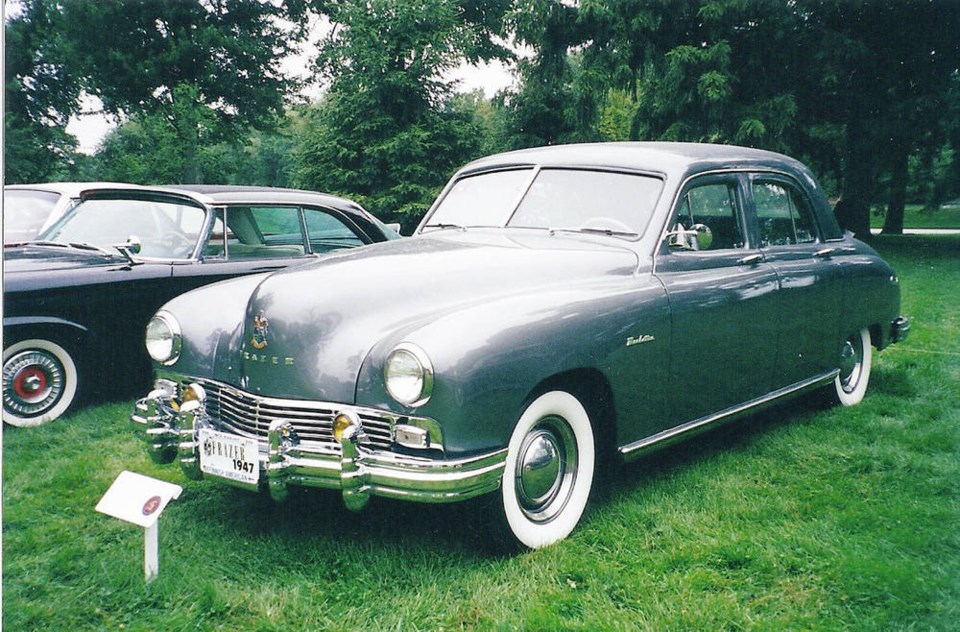In the early decades of the twentieth century many ambitious entrepreneurs were able to start car companies because entry was fairly easy for a talented blacksmith, carriage maker or bicycle builder.
The investment was relatively small and cars could sometimes be presold before they was built, giving the budding builder some working capital. Hundreds of these aspiring Henry Fords popped up but most soon disappeared, sometimes after building only one prototype.
It was possible to enter the car manufacturing business because in addition to the parts the builders could make for themselves like bodies and frames, many suppliers offered such components as bearings, brakes, transmissions and steering gears. Vehicles made mostly of these supplied components became known as “assembled” cars.
The engine is the heart of a car and the would-be automotive pioneer’s biggest challenge. Designing and building an engine is expensive and exacting work requiring specialized skills and equipment. Fortunately there were also proprietary engine companies with names like Hercules, Lycoming, Duesenberg, Weidley , Wisconsin and Continental that could supply them.
The most successful of the engine builders was Continental Motor Corp., of Muskegon, Michigan, producer of the Continental “Red Seal” engine named for the distinctive red badge on the block. Although there were other suppliers, Continental built powerplants predominately with six cylinders for the majority of American manufacturers who did not make their own.
Continental’s story began in 1903 when a young engineer named Ross Judson borrowed enough money from his sister and brother-in-law A.W.Tobin to found an engine manufacturing company in Chicago.
Judson and Tobin became partners and called their new enterprise Autocar Equipment Co. They managed to display an engine at the 1903 Chicago auto show and collected enough orders to support the construction of a new plant in Muskegon.
When they learned that a truck manufacturers in Pennsylvania was already using the Autocar name the company was renamed Continental Motor Corporation.
Orders for engines began to flow in from car manufacturers like Studebaker and Chalmers. Studebaker placed an order for 1,000. Then in about 1910 a big break came when recently formed Detroit-based Hudson Motor Co., ordered 10,000 engin`es. With this huge order the young Continental company was on its way.
Continental’s approach to engine manufacturing was basic and sound: design and build engines, usually of the side-valve types, that were rugged, reliable and uncomplicated. They started out with two cylinder units, then concentrated on fours for a while before expanding to a six in 1911 and eventually adding an eight.
Hudson sold so many Continental sixes in its 1913 model 54 that it claimed to be the world’s largest purveyor of six cylinder cars. This prompted Continental to open a Detroit plant.
In the 19-teen years Continental’s designs proliferated into a large number of engines, not just for specific orders but so they would have a catalogue of off-the-shelf power.
Its salesmen showed them to prospective customers and if Continental didn’t have a stock engine that fitted the purchaser’s exact specifications it would modify one of its designs. In fact they built so many different bore and stroke combinations that it was occasionally confusing even for the salesmen.
The 1920s were Continental’s boom years as they supplied engines to over 100 companies including Durant, Reo, Willys, Auburn, Peerless, Graham, Ruxton and Checker, plus many smaller firms now long forgotten.
Then came the 1930s when many auto manufacturers disappeared under the economic crush of the Depression. It took away much of Continental’s business and to counter this it diversified into diesel, aircraft, truck and industrial engines.
It also marketed its own Continental car based on the short-lived deVaux car. Alas as the Continental car it was also short lived. Produced only in 1933 and ‘34 it proved to be an expensive experiment.
Of the automobile customers that remained from the 1930s Continental supplied engines to Graham-Paige Motors of Detroit until 1941 and the Checker Cab Co., later Checker Motors Corp., of Kalamazoo, Michigan from the 1930s through to the ’60s.
With much of its car engine business gone, Continental was in financial trouble. The advent of the Second World War prompted it to shift into more aircraft and truck engines, both gasoline and diesel.
It also built engines for such industrial applications as agricultural machinery and construction equipment. After the war it would provide engines for the popular Cessna 150 and Beechcraft Bonanza airplanes, among others.
In 1945 when the new Kaiser-Frazer car company was organized it decided to use Continental side-valve 3.7 litre (226 cu in.) six cylinder engines. When Continental couldn’t supply the number required, K-F began producing some of them itself.
Continental became part of Teledyne Technologies, Inc., and is now integrated with aircraft engine manufacturer Continental Aerospace Technologies.



